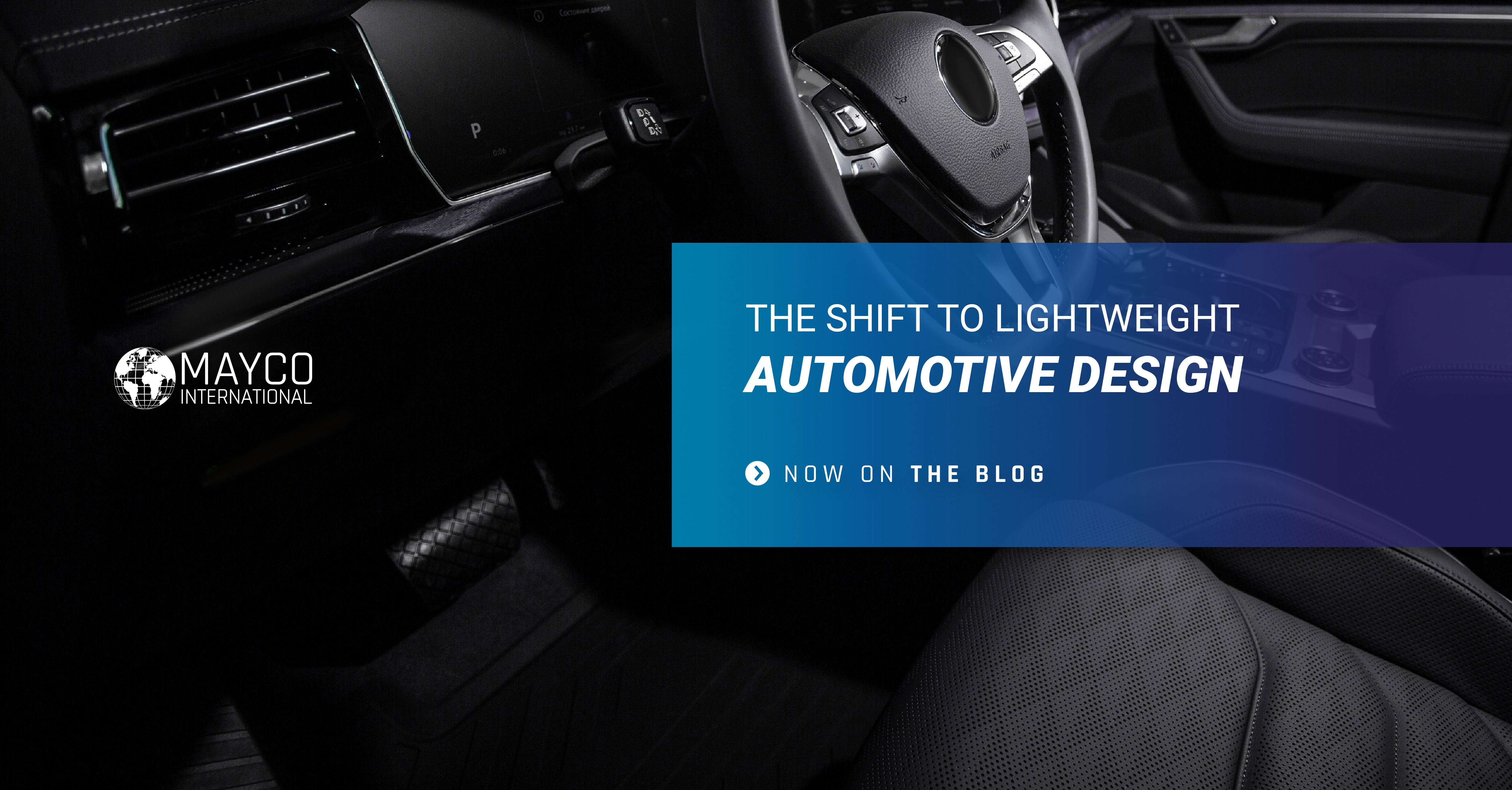Nov 04/25
Revolutionizing Cars: The Shift to Lightweight Automotive Design

- Lightweight automotive programs can remove mass at scale with a range of processes.
- Your success often depends on how well you implement key design, manufacturing, and validation processes.
- Mayco International is a tier-one supplier with expertise in delivering measurable, reliable savings in vehicle mass.
Practicing Lightweight automotive innovation helps you when it comes to car weight reduction. In doing so, it offers key benefits in the areas of:
- Production efficiency
- Vehicle performance
- Energy efficiency and range
- Sustainable car design
- Strength-to-weight optimization
- Maintained safety and durability
Understanding how lightweight vehicle materials benefit your production process will help you prepare for their impact on the future of automobiles.
What Is Lightweighting in Manufacturing?
At Mayco International, our lightweighting process involves making decisions that reduce a vehicle’s mass while maintaining other traits. Through these choices, we create thinner, stronger parts that we can mass-produce at scale.
- We reduce part mass by choosing lower-density materials that maintain strength,
- Developing ribbed or thinned vehicle sections enables us to remove excess material after verifying through strength testing.
- Thin-wall injection molding can increase stiffness without bulk, often aiming for ~1mm walls where design and materials allow.
- Compression molding of fiber-reinforced composites can increase specific strength at lower mass, depending on the specifics.
- Tooling trials and prototyping can identify excess material, supporting the engineering process.
What Does Lightweight Automotive Design Offer?
The future of automobiles is likely to trend toward lightweighting in many areas. It may even offer greater fuel economy, as the vehicle achieves higher gains when moving a lighter-weight car with the same fuel, depending on the vehicle.
Tracking the cost per kilogram saved, as well as any KPIs related to function, you may be able to institute more affordable processes and use those savings elsewhere instead.
Strategies for Weight Reduction
Many manufacturers focus on reducing the densest and most massive vehicle parts first for the biggest bang for the buck.
It can also be beneficial to use load-path analysis and prototyping to determine where you can remove material without compromising the vehicle’s safety. Those areas that are barely carrying stress can often be trimmed or even, in some cases, removed.
Combine parts where it makes sense to do so, removing overlapping seams and flanges. With fewer parts and reduced overlap, you don’t need to worry about as much weight.
However, validate the corrosion resistance of exterior panels and adjust any protective coatings or films as needed.
Standardizing hold sizes and fasteners may allow the use of lighter hardware. In many cases, this may simplify the assembly process while allowing you to utilize lighter hardware.
Consolidating Lightweighting Wins
Multi-material design processes allow you to start focusing on more lightweight automotive practices. Then, by proving them through robust validation processes, as Mayco International does, you retain your design’s safety.
If you want the benefits of this methodology but don’t know where to start? Mayco International is a tier-one supplier and can offer end-to-end design-to-delivery processes to get you what you need. Get in touch today to learn more about our process, expertise, and locations.

